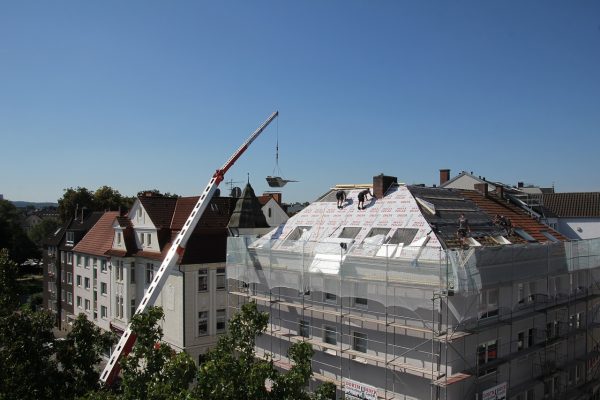When trying to carefully plan every facet of a roofing installation for a large-scale construction project, you will find that there are considerable challenges not only for the company that commissioned the work, but also for the roofing professionals who will be handling it. physically with roof installation on an active construction site. A commercial roof, especially on a large-scale project, is no simple task, even for the best and most experienced roofers. Finding the best roof foundation can be a challenge. To ease the anxiety you may feel and help you stay focused on what's important, here are some professional tips and advice for managers of large-scale construction projects. This information will help you keep your crew safe by practicing proper safety procedures and ensuring the job is done correctly and in a timely manner from the start.
- Before you begin full-scale roof installation at the construction site, take your time and do a thorough safety sweep of the work zone to ensure everything is in the right place – accessible but out of the way of workers, their equipment, and security must be ready and all plans are in order to begin the work in question.
- Make sure all roofers assigned to the job have the proper protective equipment, including safety belts and roof supports to help prevent falls. Did you know that, according to OSHA, the biggest violation for construction crews when it comes to accidents involving falls is the fact that workers don't have the right tools to stay safe on the roof? This means that it is up to the construction company to ensure that everyone has the appropriate tools for the job, including equipment to prevent falls. Otherwise, you will face penalties that will lead to large monetary losses and possibly a bad reputation for poor care of your employees.
- Keep all common and frequently used roofing materials and supplies on the job site so they are available when you need them. This includes all the materials you know you'll need every day on the job, like blades, fasteners, and various types of safety equipment.

- Always use the highest quality equipment, tools and materials for your roofing project. Higher quality products tend to make the work easier and reduce the risks involved in roof installation production.
- All of your men working on roofing work for the large-scale construction project must have the proper training and experience in using the equipment, machines, and tools necessary to complete the installation. This just makes it less likely that the roofer will be injured or have an accident that causes damage to property or a person.
- Make sure crew stays away from power lines and other electrical units. Holding onto a live wire can cause a person to be shocked and thrown off a roof without hesitation. Roofers must also wear protective hand equipment while working.
- Proper footwear is extremely important for carpenters. Wearing slippery, flat-soled shoes (those without a tread) can be dangerous when climbing or standing on a steep roof. Make sure you and everyone else working on the roof have good shoes with soft treads or soles that grip the roof and have good traction to prevent falls.
- Avoid working when the weather is bad. If there is a rain or snowstorm or it is very cold outside, stay off the roof. Bad weather is the biggest setback for carpenters in the middle of a job, but it is in everyone's best interest to wait and resume work as soon as the weather improves.
- If you are working on a sloped metal roof, be sure to keep all debris off the roof to avoid slipping or causing an accident. It's a good idea to step on textured tiles whenever possible to avoid metal or other smooth surfaces that can be slippery when covered with wood debris or moisture.
- Keep tools and dangerous items away from the roof edge. Let's face it, even the best workers have clumsy moments and it can be extremely dangerous to trip over a hammer or saw sitting on the edge of the roof. All it takes is one trip over something to fall over the edge. Not to mention, if a sharp or heavy object falls from the roof, it could hurt someone below or damage property when it falls.

- Make sure ladders are safe, sturdy and secure before climbing onto the roof. All ladders must be installed on level ground and a hard surface. Placing a ladder in grass or dirt leaves room for the ladder to sink into the surface, where it can become unstable and tilt when someone is climbing. If you are working near power lines, try using a fiberglass ladder instead of an aluminum ladder to stay safer. You should also make sure that the extension ladders are a few feet higher than the roof to help give you a better grip when climbing onto the roof as well as when climbing back down.
- Plan the storage of large or bulky items so they are in place and secured in the storage container when you need to access them. The contents of your storage unit should include shingles, trusses, hoists, cranes, and other large materials and equipment used in roofing. Even the coverage team's tools and protective equipment can be put away at the end of each day.
When you take the time to ensure that safety is the most important thing on your workplace to-do list, you are not only helping to ensure there are fewer accidents or injuries, but you are also keeping insurance costs down and helping to avoid lawsuits from dissatisfied customers or even roofing team members. The safety of your contractors, others working on the job site, and the overall professionalism displayed and practiced as you conduct the large-scale construction project should be most important.
Written by Tom Masters

